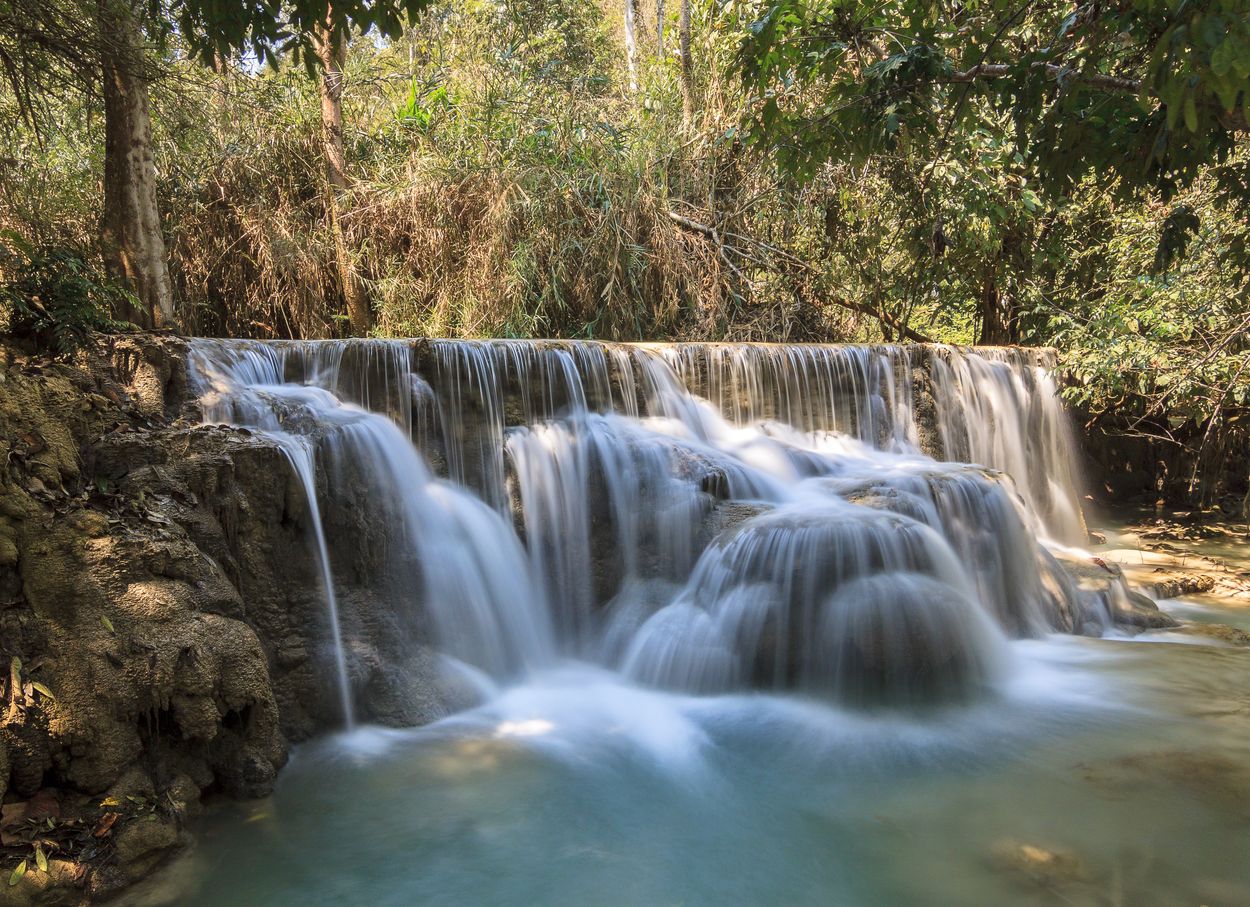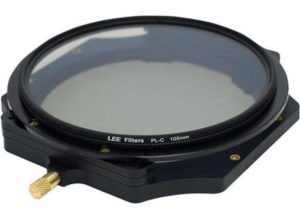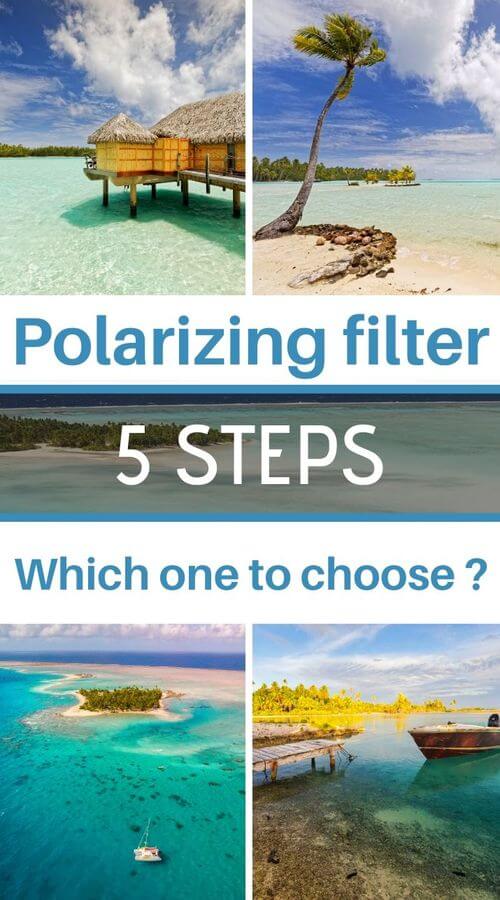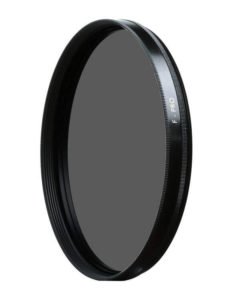How to choose a polarizing filter?
Last update: 04/19/2024
Our blog continues to grow thanks to you, our readers. This post may contain affiliate links, which means we can earn a small commission if you make a purchase through them, at no extra cost to you. This helps us to continue to bring you more and support our work!
After explaining in a recent article what a polarizing filter is used for, and its usefulness especially in landscape photography, I then felt it was important to explain how to choose a polarizing filter? There are so many choices and options that it is sometimes difficult to work out which to choose. These filters are most often used to enhance the contrast and brighten photos. As a beginner, the best way to start in photography is by learning to use a polarizing filter. Bear in mind that all standard camera lenses, regardless of their brand, can accommodate a polarizing filter.
This is the second article in the series on polarizing filters on my photography blog and hopefully it helps you understand photography in a more clear, concise way. So, depending on how you take your photographs, you’ll find that certain situations will require using a polarizing filter to compensate, correct or simply remove reflections on a photo. The purpose of this article is not to test the best 82mm polarizing filter (assuming there is one), but to guide you in your choice, according to your needs, your budget and your photography practice.

One important thing to keep in mind is that a polarizing filter is used to improve your photos when actually taking them, and therefore reduce the number of hours spent in post-processing (or post-production = time spent with editing software on a computer). Just place the filter and look, without using the viewfinder, to see the magic happen: a beautiful saturation of colors and a beautiful polarized light, just as I like them. With this in mind, it is therefore necessary to choose a polarizing filter of the best quality you can afford. See your purchase as a long-term investment and try not to skimp for the sake of saving a few pounds/dollars. It is clearly better to choose a good quality polarizing filter right from the beginning. So, which one to choose and how?
You should also know that it’s possible to us polarizing filter on DSLR camera or mirrorless camera !
As Amazon Associates, we earn from qualifying purchases. It means that, all the links linking to camera gear in this post are redirecting to Amazon stores
A quick reminder about the polarizing filter
If you are not familiar with the polarizing filter and its usefulness, I invite you to read my article dedicated to this. Basically, the polarizing filter is a photography filter which is widely used in landscape photography. It is one of the most useful and perhaps even most essential accessories you should have in your photography bag (i.e. tripod, memory card, neutral filter (ND)). In bright sunlight it may very well save your entire shoot! A polarizing filter is very often coupled with a wide-angle lens (this allows you to take even more beautiful pictures).
Here are some things to remember
How to choose a polarizing filter?
In my opinion, there are five main criteria to consider when purchasing a polarizing filter:
1 - The diameter
This is definitely the first thing to look at when choosing a polarizing filter. The filter needs to fit the diameter of your camera’s lens therefore check your camera lens first. The diameter size is indicated on the top in millimeters (Ex: 16mm, 35mm, 50mm, 55mm, 65mm, 77mm, 82mm, 100mm, 300mm, etc.).

Example of a high quality Marumi polarizing filter – More details on Amazon
In theory, one polarizing filter of the correct size should fit all. I say “in theory” because there is a technique to avoid having to buy a polarizing filter for each lens you have, which can be very expensive if you have 4 or 5.
Basically, if you have several lenses you can buy an adapter ring to make your filter fit them all. Choose a polarizing filter that fits the largest (in diameter) of your lenses and then buy an adapter, which reduces the diameter, thereby allowing you to use your polarizing filter on smaller lenses.
2 - The Type
Here is another criterion to take into account, even if it is less and less relevant today. Overall, there are two types of filters:
Circular Polarizing Filters (CPL): the majority of the commercial polarizing filters these days are of this type. These filters are able to measure the desired polarizing effect on your photo. Once attached, you can measure the polarity and accentuate or reduce the effect depending on the scene and the lighting conditions of the shot. I often make several attempts when choosing the level of polarization I want for a landscape. These filters are the easiest to use and the ones I particularly recommend.
These filters are also easy to use; you simply place your polarizing filter on to the thread of your camera lens, screw it on and rotate it according to the desired effect. It should be noted that the use of a lens hood would be limited in most cases. Once finished, simply unscrew the filter, clean it with a cloth and store it in its box to prevent it from collecting dust.

I have been using Hoya HD polarizing filters for a long time – More details on Amazon
Square/rectangular polarizing filter : this is an alternative to the CPL filter. Some well-known brands offer these as an alternative, including Cokin and Lee. However, these filters have a major disadvantage: they are linear polarizing filters. It is therefore impossible for you to play around with the desired level of polarization for your scene. Note also that these must be mounted on a filter holder.

Example of a NISI square polarizing filter – More details on Amazon
You should also know that you can use a polarizing filter along with other filters (GND, ND) thanks to a filter holder system. I have just ended my first complete test of the K9 filter holder from KASE and their filters.
3 - The Brand
Wondering which brand to choose? Is there a good brand? In my opinion, this is an important criterion to take into account when choosing a polarizing filter. There are indeed some brands that stand out from the crowd, and which all photographers agree are the best on the market: :
Other brands however do exist such as Hama or Marumi.
Note that if you have a Canon lens, a Nikon lens, a Zeiss lens or similar brands, all polarizing filters can be mounted on them. You should also know that even the major camera brands have made their own filters. Thus, the Canon polarizing filter and the Nikon polarizing filter exist, even if few people actually choose to use them.

Here is my Lee polarizing filter that I use on my wide angle lens – More details on Amazon
I generally advise to stay with well-known brands; you will have less surprises on the quality of the filter and its impact on your photos.
4 - Thickness
This is also one of the key criteria when choosing your polarizing filter. There are two types to choose from, normal and slim / Ultra slim (“thin”). Thin models are almost mandatory for wide-angle lenses. Depending on the focal length used, the type of camera (aps-c or full frame), and the aperture of the diaphragm used while taking your photographs, you will see more or less vignetting on the edges of your photos. Concerning the aperture, the more you use a large aperture (e.g.: f/2.8), the more you will see vignetting appear. In practice, you see less filtering on the edges of the photo…, which is not great!
The normal filter is simply a thicker filter than the Slim. In order to solve this problem, you will need to determine the focal length you use the most and the type of camera you use. With wide-angle and ultra-wide-angle lenses, vignetting can occur quite quickly, starting from 21 mm in Full Frame (full format), and 16/17 mm in APS-C.
It is impossible for me to list here all the types of lenses + polarizing filters, and say whether or not there will be vignetting or not. It is best to check the forums before buying. With long focal lengths, zooms, you will obviously not have any problems with vignetting.
I have a very good polarizing filter for my Canon 70-300 L IS Zoom which is perfect.
Regarding my lens for landscape photography, my 24-70 mm L f/2.8, I use Lee’s system, with the Foundation Kit and an 82 mm wide angle adapter ring to mount my Lee Landscape Polarizing Filter (105 mm). It all cost an arm and a leg, but I’m delighted!
For information, I can stack 2 lens filters on my filter holder (Big Stopper filters + GND Soft Edge 0.9 Gradient Filter) and my polarizer on top, without seeing any vignetting at 24 mm.
5 - The budget
The budget remains the most sensitive aspect for some people. I know I’m repeating myself but do not skimp on the quality of your polarizing filter at the risk of degrading your photos.
There are polarizing filters for all budgets. From good value for money to very expensive, from €20 to over €200 per filter. Everything will depend essentially on:
- Diameter : the larger the diameter of your lens, the more expensive the filter will be,
- Brand : well-known (and better quality) brands are also more expensive,
- Quality : this has to be paid for (the treatment of the glass is not always the same) and a
good quality filter will obviously cost more than a poor quality or low-end filter.
To find out how to choose a polarizing filter, gather as much information as you can about the different types of filters available and make comparisons in order to make the best choice. In the following paragraph, I will give you some recommendations regarding polarizing filters used for different purposes.
Which filters to choose? My recommendations
Here are some of my recommendations to help you choose your polarizing filter according to a variety of lenses. I prefer slim filters when possible, especially for wide-angle lenses.
Wide-angle lenses
Here are the filter recommendations by lenses, classified by diameter (it’s easier)
67mm : Hoya filter, Marumi filter
- Canon EF-S 10-18 mm f/4,5-5,6 IS STM – 67 mm
77mm : Hoya filter, B+W filter and Marumi filter
- CANON EF 17-40 mm f/4L USM – 77 mm
- CANON EF-S 10-22 mm f/3.5–4.5 USM – 77 mm
- Nikon AF-S DX 10-24 mm f/3.5-4.5 – 77 mm
- Nikon Nikkor AF-S 16-35 mm f/4G ED VR – 77 mm
- Tamron AF 10-24 mm f/3,5-4,5 DI II LD IF – 77 mm
- Tokina AT-X PRO DX II 11-16 mm f/2.8 – 77 mm
82mm : Hoya filter, B+W filter, Marumi filter
- CANON EF 16–35 mm f/2.8 L USM II – 82 mm
- Sigma 10-20 mm f/3,5 EX DC HSM – 82 mm
- Tokina 11-20 mm f/2,8 AT-X PRO DX – 82 mm
Standard lenses
Here are my recommendations for standard lenses
77mm : Hoya filter, B+W filter, Marumi filter
- Canon EF-S 18-55 mm f/3,5 – 5,6 IS STM – 77 mm
- Canon 24-70 mm f/4.0 L IS USM : 77 mm -> I personally use the Foundation Kit and a 82mm wide-angle adapter ring to shoot with my Lee Landscape Polarizing filter (105 mm).
- Nikon AF-S 24-70 mm f/2.8G ED – 77 mm
82mm : Hoya filter, chez B+W filter, Marumi filter
- Canon EF 24-70 mm f/2,8 L II USM – 82 mm
- Sigma 24-70mm f/2.8 DG OS HSM – 82 mm
- Tamron SP 24-70 mm f/2,8 Di VC USD – 82 mm
Telephoto lenses
And for telephoto lenses :
67mm : Hoya filter, Marumi filter
- Canon 70-200 mm f/4.0 L USM – 67 mm
- Canon EF 70-300 f/4-5.6 L IS USM – 67 mm
- Nikon 70-200 mm f/4,0 G ED VR AF-S – 67 mm
77mm : Hoya filter, B+W filter, Marumi filter
- Canon EF 70-200 mm f/2,8 L IS II USM – 77 mm
- Canon EF 70-200 mm F/2,8 L USM – 77 mm
- Nikon AF-S NIKKOR 70-200 mm f/2.8G ED VR II – 77 mm
- Sigma 70-200 mm f/2,8 DG APO OS EX HSM – 77 mm
- Tamron SP AF 70-200mm f/2,8 Di VC USD – 77 mm
So there you are, I hope this article has helped you choose a polarizing filter and that you are now ready to make your purchase in an informed way. If you don’t know what the effects of a polarizing filter are yet, take a look at this article to find out what a polarizing filter is used for.
Once you have made your purchase, feel free to come and read the article that explains how to use a polarizing filter in photography.
If you are in any way hesitating between several filters or have any questions regarding this article, do not hesitate to leave me a comment at the bottom of the article, I will be happy to answer it!
Today, I consider a polarizing filter to be an essential accessory for the landscape photographer, mine never leaves my photo bag! You don’t need to be a professional photographer to use a polarizing filter. Passionate amateur photographers, like you and me, can easily use them, with a little practice of course.
As for you, do you already use this type of filter? Taking pictures with a polarizing filter soon becomes a breeze!

Written by Sylvain PONS
I've been passionate about photography since 2010, learning as I went along. Today, I dedicate myself to guiding others in their choice of camera gear and sharing a variety of tips to improve their photography skills.
Despite our care, a mistake may have slipped into this article. If you find any, please don't hesitate to let us know so we can correct it as soon as possible and keep our information up-to-date!













We are heading to Polynesia in February 2023. I ran across your web site doing research on the islands. Then a month later when I was researching polorizer filters for my new camera lens I ran across your site again. Nice site thanks for all the great info.
You’re very welcome and glad you liked our blog then 🙂